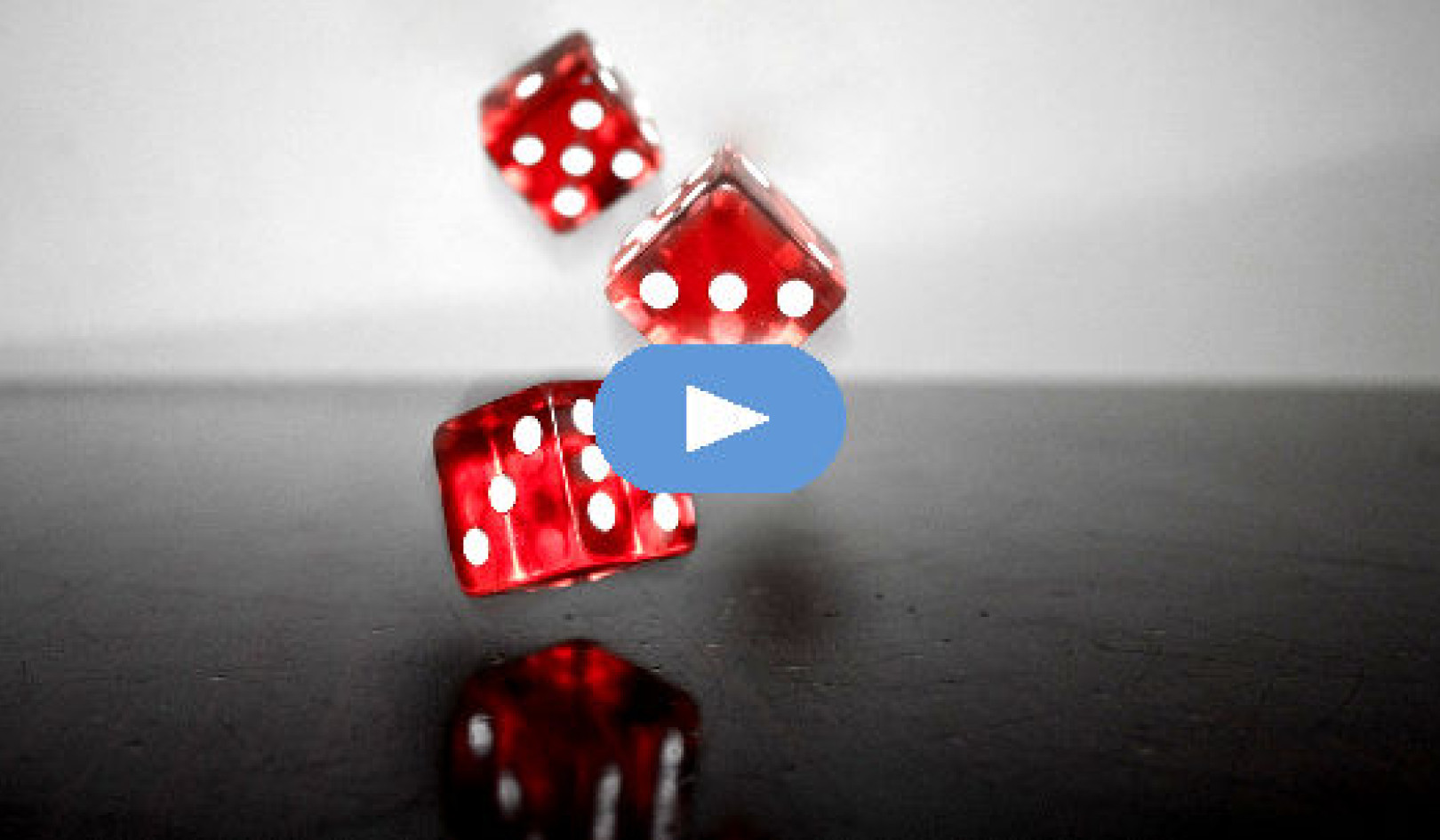
In order to experience fearlessness, it is necessary to experience fear. The essence of cowardice is not acknowledging the reality of fear. Fear can take many forms. Logically, we know we can't live forever. We know that we are going to die, so we are afraid. We are petrified of our death.
On another level, we are afraid that we can't handle the demands of the world. This fear expresses itself as a feeling of inadequacy. We feel that our own lives are overwhelming, and confronting the rest of the world is more overwhelming.
Then there is abrupt fear, or panic, that arises when new situations occur suddenly in our lives. When we feel that we can't handle them, we jump or twitch. Sometimes fear manifests in the form of restlessness: doodles on a note pad, playing with our fingers, or fidgeting in our chairs. We feel that we have to keep ourselves moving all the time, like an engine running in a motor car. The pistons go up and down, up and down. As long as the pistons keep moving, we feel safe. Otherwise, we are afraid we might die on the spot.
There are innumerable strategies that we use to take our minds off of fear. Some people take tranquilizers. Some people do yoga. Some people watch television, or read a magazine, or go to a bar to have a beer. From the coward's point of view, boredom should be avoided, because when we are bored we begin to feel anxious. We are getting closer to our fear. Entertainment should be promoted and any thought of death should be avoided. So cowardice is trying to live our lives as though death were unknown.
There have been periods in history in which many people searched for a potion of longevity. If there were such a thing, most people would find it quite horrific. If they had to live in this world for a thousand years without dying, long before they got to their thousandth birthday, they would probably commit suicide. Even if you could live forever, you would be unable to avoid the reality of death and suffering around you.
Acknowledging Fear
Fear has to be acknowledged. We have to realize our fear and reconcile ourselves with fear. We should look at how we move, how we talk, how we conduct ourselves, how we chew our nails, how we sometimes put our hands in our pockets uselessly. Then we will find something out about how fear is expressed in the form of restlessness. We must face the fact that fear is lurking in our lives, always, in everything we do.
On the other hand, acknowledging fear is not a cause for depression or discouragement. Because we possess such fear, we also are potentially entitled to experience fearlessness. True fearlessness is not the reduction of fear, but going beyond fear. Unfortunately, in the English language, we don't have one word that means that. Fearlessness is the closest term, but by fearless we don't mean "less fear", but "beyond fear".
Going beyond fear begins when we examine our fear: our anxiety, nervousness, concern, and restlessness. If we look into our fear, if we look beneath its veneer, the first thing we find is sadness, beneath the nervousness. Nervousness is cranking up, vibrating, all the time. When we slow down, when we relax with our fear, we find sadness, which is calm and gentle. Sadness hits you in your heart, and your body produces a tear. Before you cry, there is a feeling in your chest and then, after that, you produce tears in your eyes. You are about to produce rain or a waterfall in your eyes and you feel sad and lonely, and perhaps romantic at the same time. That is the first tip of fearlessness, and the first sign of real warriorship.
You might think that, when you experience fearlessness, you will hear the opening to Beethoven's Fifth Symphony or see a great explosion in the sky, but it doesn't happen that way. In the Shambhala tradition, discovering fearlessness comes from working with the softness of the human heart.
The birth of the warrior is like the first growth of a reindeer's horns. At first, the horns are very soft and almost rubbery, and they have little hairs growing on them. They are not yet horns, as such: they are just sloppy growths with blood inside. Then, as the reindeer ages, the horns grow stronger, developing four points or ten points or even forty points. Fearlessness, at the beginning, is like those rubbery horns. They look like horns, but you can't quite fight with them. When a reindeer first grows its horns, it doesn't know what to use them for. It must feel very awkward to have those soft, lumpy growths on your head. But then the reindeer begins to realize that it should have horns: that horns are a natural part of being a reindeer.
In the same way, when a human being first gives birth to the tender heart of warriorship, he or she may feel extremely awkward or uncertain about how to relate to this kind of fearlessness. But then, as you experience this sadness more and more, you realize that human beings should be tender and open. So you no longer need to feel shy or embarrassed about being gentle. In fact, your softness begins to become passionate. You would like to extend yourself to others and communicate with them.
When tenderness evolves in that direction, then you can truly appreciate the world around you. Sense perceptions become very interesting things. You are so tender and open already that you cannot help opening yourself to what takes place all around you. When you see red or green or yellow or black, you respond to them from the bottom of your heart. When you see someone else crying or laughing or being afraid, you respond to them as well. At that point, your beginning level of fearlessness is developing further into warriorship.
When you begin to feel comfortable being a gentle and decent person, your reindeer horns no longer have little hairs growing on them -- they are becoming real horns. Situations become very real, quite real, and on the other hand, quite ordinary. Fear evolves into fearlessness naturally, very simply, and quite straightforwardly.
The ideal of warriorship is that the warrior should be sad and tender, and because of that, the warrior can be very brave as well. Without that heartfelt sadness, bravery is brittle, like a china cup. If you drop it, it will break or chip. But the bravery of the warrior is like a lacquer cup, which has a wooden base covered with layers of lacquer. If the cup drops, it will bounce rather than break. It is soft and hard at the same time.
Reprinted with permission of the publisher,
Shambhala Publications Inc., Boston, MA, USA.
©1999, 2007. www.shambhala.com
Article Source
Shambhala: The Sacred Path of the Warrior
by Chogyam Trungpa.
 This timeless classic presents a vision of basic human wisdom that synchronizes the mind and body—what Chögyam Trungpa called the sacred path of the warrior. This discipline embodies characteristics that many cultures, regions, and spiritual traditions throughout time have found valuable. The sacred warrior conquers the world not through violence or aggression but through gentleness, courage, and self-knowledge, discovering the basic goodness of human life and radiating that goodness out into the world for the peace and sanity of others.
This timeless classic presents a vision of basic human wisdom that synchronizes the mind and body—what Chögyam Trungpa called the sacred path of the warrior. This discipline embodies characteristics that many cultures, regions, and spiritual traditions throughout time have found valuable. The sacred warrior conquers the world not through violence or aggression but through gentleness, courage, and self-knowledge, discovering the basic goodness of human life and radiating that goodness out into the world for the peace and sanity of others.
Info/Order this book. Also available as a Kindle edition and an Audiobook.
About The Author
 CHOGYAM TRUNGPA, meditation master, scholar, and artist, founded the Naropa Institute in Boulder, Colorado; Shambhala Training; and Shambhala International, an association of meditation centers. His other books include Cutting Through Spiritual Materialism, The Myth of Freedom and the Way of Meditation, and Meditation in Action. For more information about the author and Shambhala meditation centers, visit www.shambhala.org.
CHOGYAM TRUNGPA, meditation master, scholar, and artist, founded the Naropa Institute in Boulder, Colorado; Shambhala Training; and Shambhala International, an association of meditation centers. His other books include Cutting Through Spiritual Materialism, The Myth of Freedom and the Way of Meditation, and Meditation in Action. For more information about the author and Shambhala meditation centers, visit www.shambhala.org.
More Books by this Author
at InnerSelf Market and Amazon



























